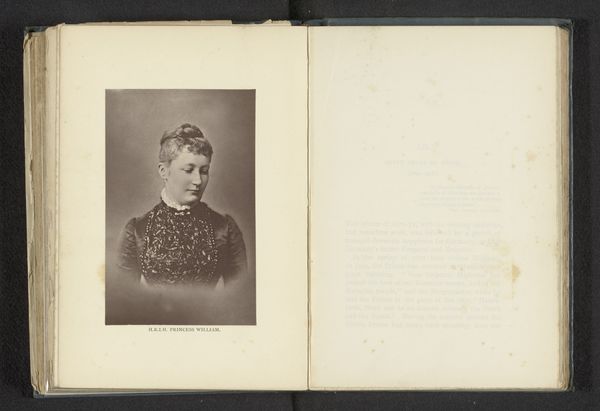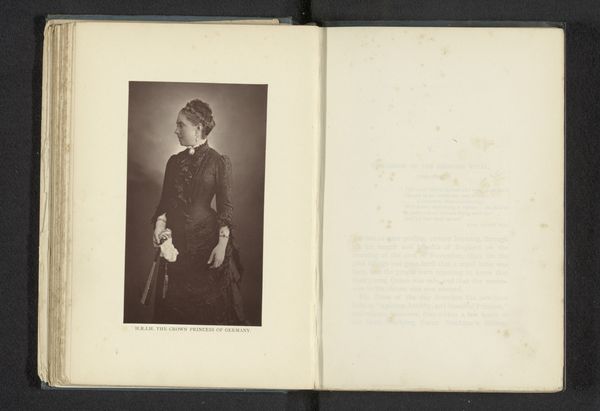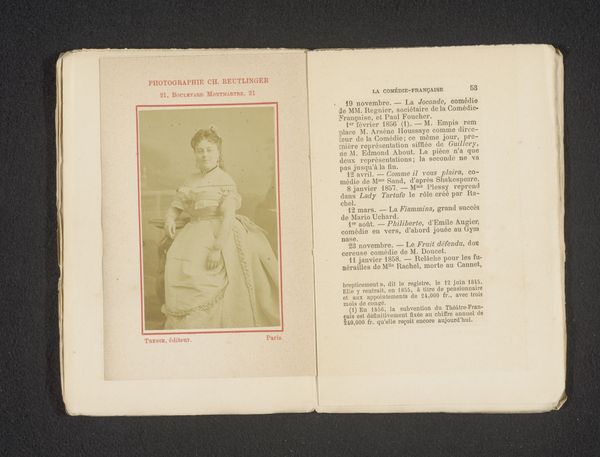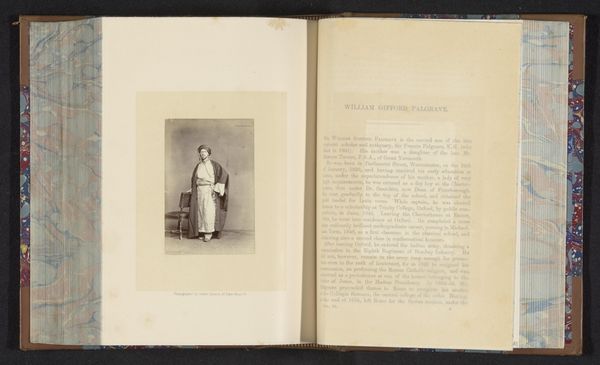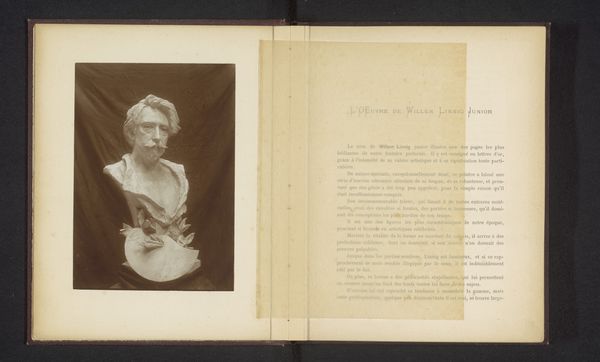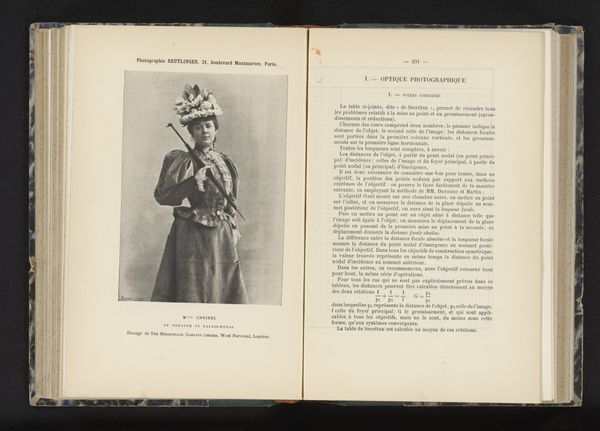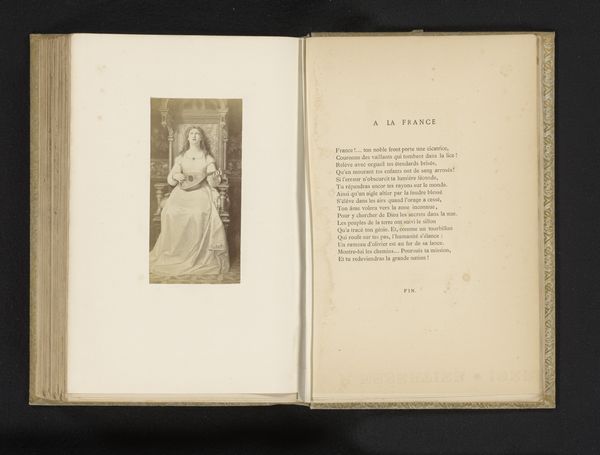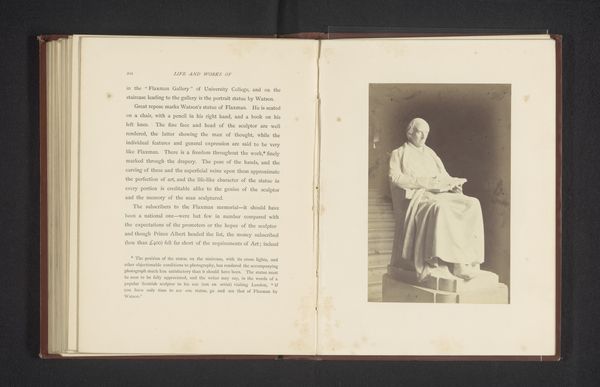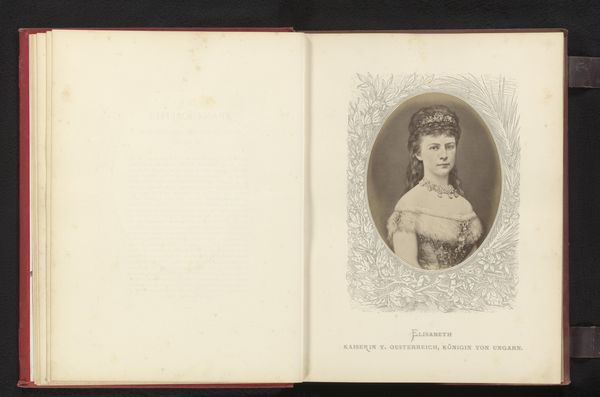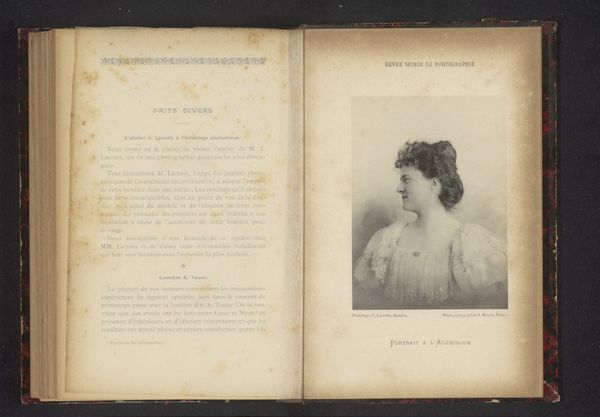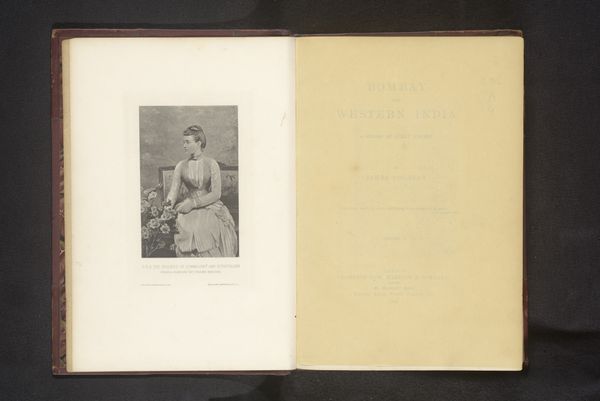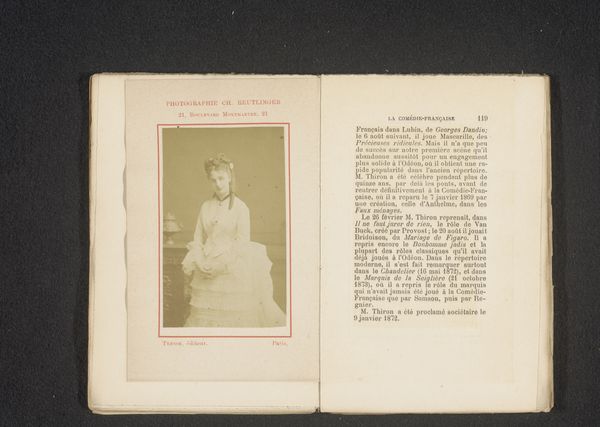
Dimensions: height 163 mm, width 120 mm
Copyright: Rijks Museum: Open Domain
This intriguing photographic portrait of an unknown female painter was made by W.W. Winter. The image is an albumen print, a process popular in the 19th century, where the photographic emulsion is coated on paper with egg white. The inherent qualities of the albumen print – its sepia tones, smooth surface, and fine detail – lend the portrait a sense of intimacy and directness. The artist's gaze is steady, her hand rests on a painter's palette, and her tools are visible. Photography, in its early days, involved a complex interplay of science, craft, and artistry. The photographer acted as a skilled craftsman, manipulating chemicals and light to create a unique image. In the late 19th century, photography was increasingly tied to wider social issues of labor, politics, and consumption. The labor involved in producing an albumen print – from preparing the paper to developing the image – was significant. This portrait prompts us to reconsider traditional distinctions between fine art and craft, acknowledging the artistry of the photographer and the labor involved in the production of the image.
Comments
No comments
Be the first to comment and join the conversation on the ultimate creative platform.
